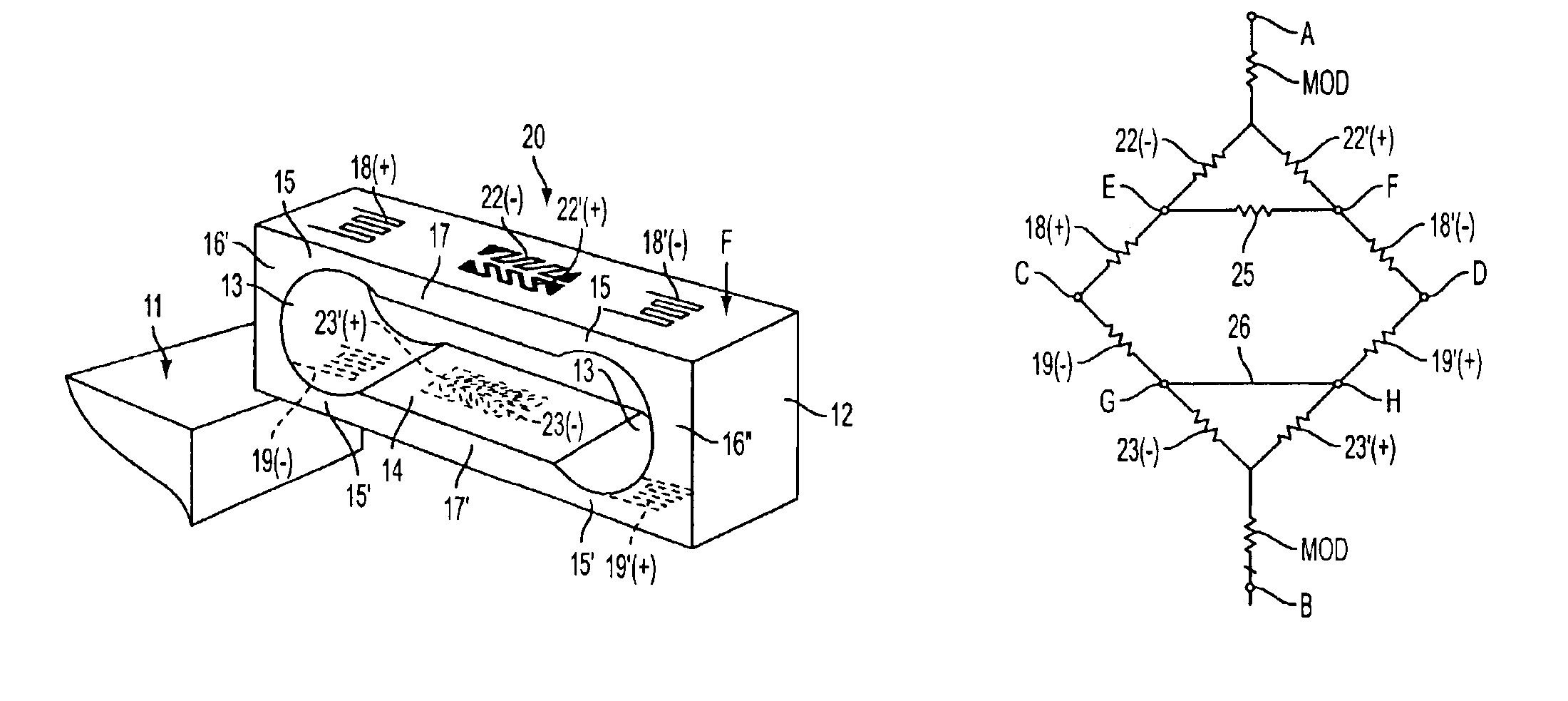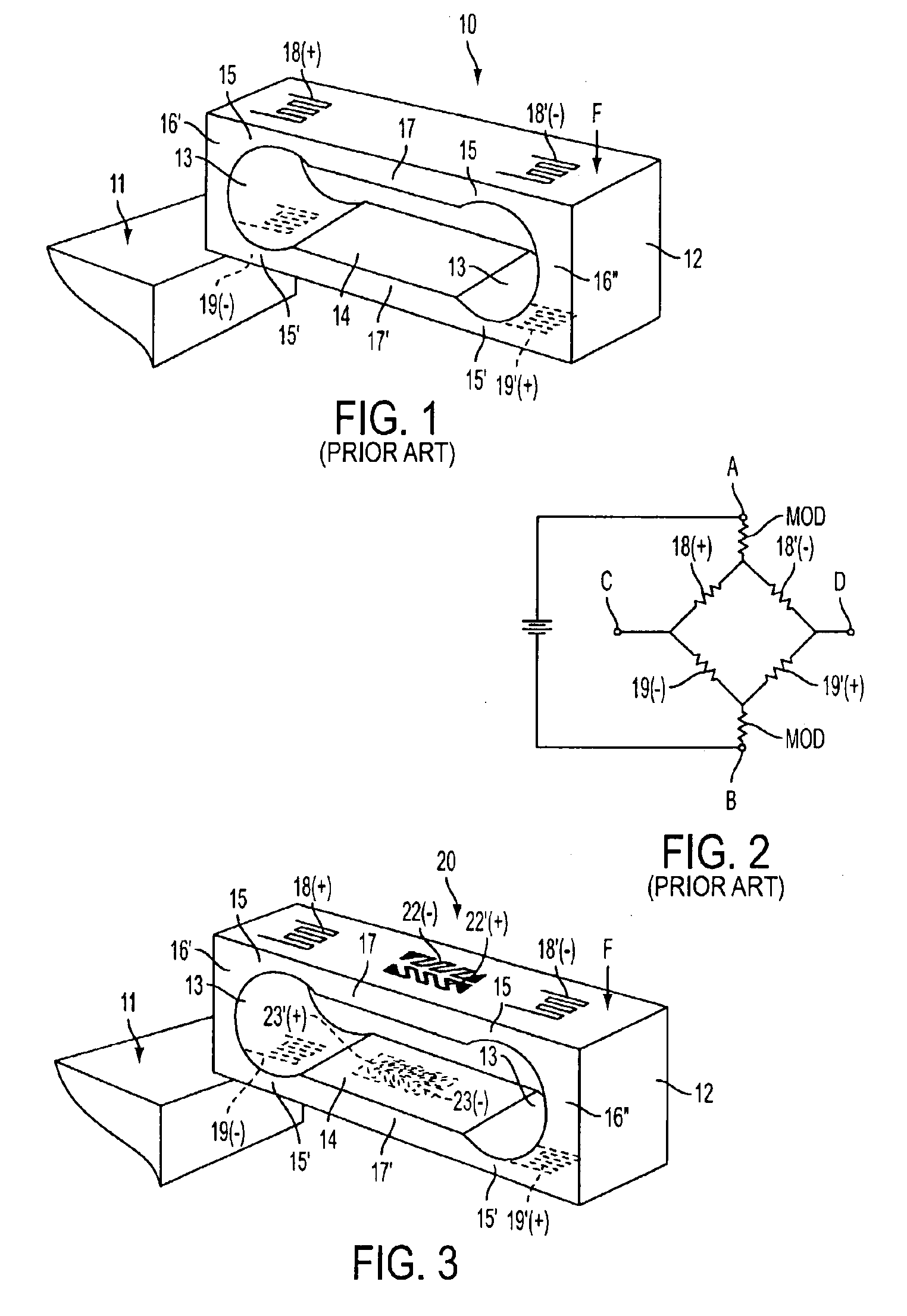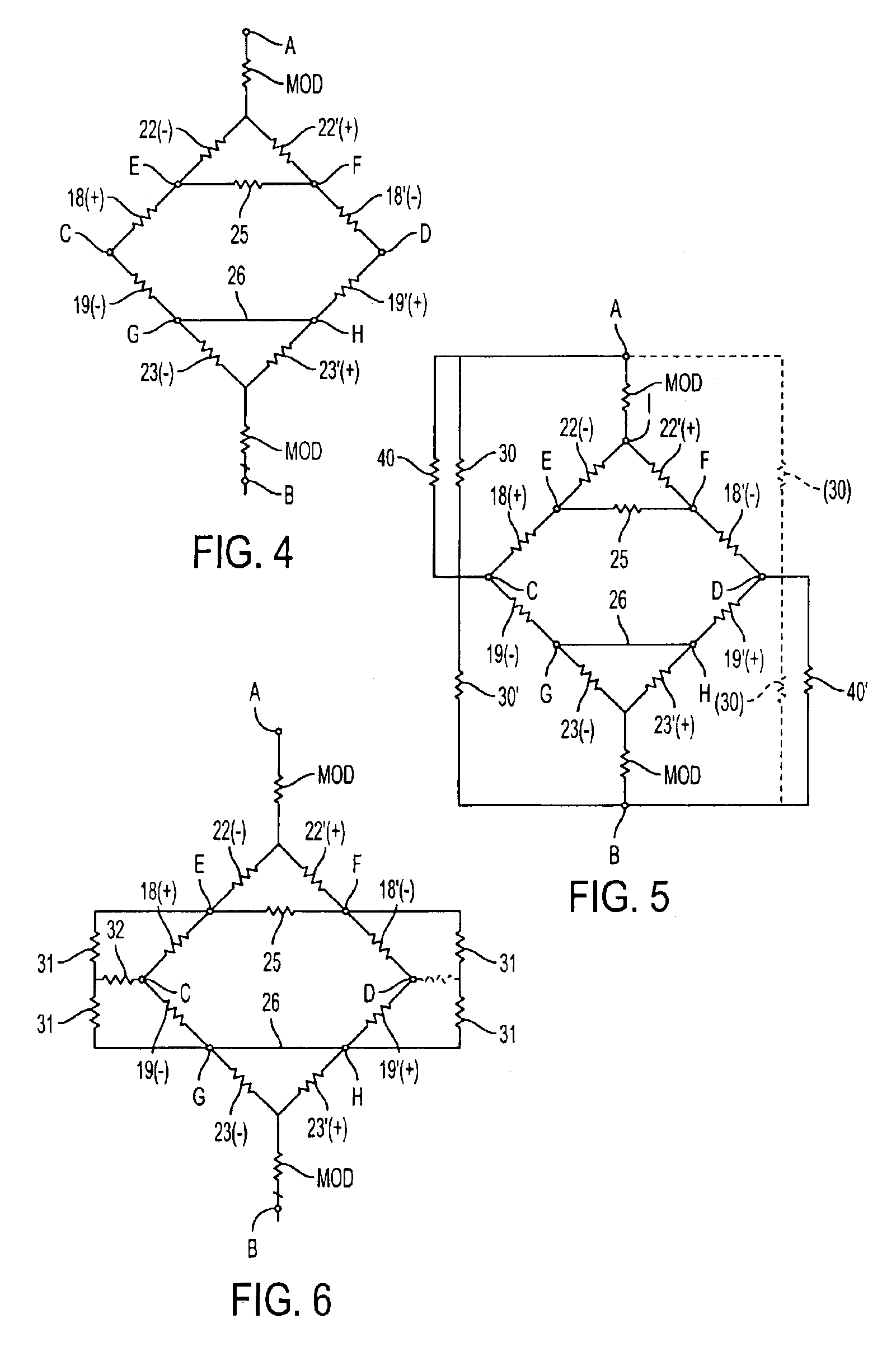Bending beam load cell with torque sensitivity compensation
a technology of torque sensitivity compensation and load cell, which is applied in the direction of force measurement, force/torque/work measurement apparatus, instruments, etc., can solve the problems of small differences in the strain sensitivity of the four strain gages, small mechanical differences in the bending beam, and errors in the position of the gages on the bending beam
- Summary
- Abstract
- Description
- Claims
- Application Information
AI Technical Summary
Benefits of technology
Problems solved by technology
Method used
Image
Examples
Embodiment Construction
[0028]Reference will now be made in detail to the embodiments of the present invention, examples of which are illustrated in the accompanying drawings, wherein like reference numerals refer to like elements throughout. The embodiments are described below in order to explain the present invention by referring to the figures.
[0029]Compensation for torque sensitivity according to embodiments of the invention is best understood by comparison with a prior art load cell, which is shown in FIGS. 1 and 2.
[0030]FIG. 1 is a simplified perspective view of a single point load cell 10, which is cantilevered from a base 11. The load cell is made from a block 12 of load cell quality metal alloy. Two transverse cylindrical cutouts 13 are joined by a longitudinal slot 14 to form a pair of bending beams 17, 17′ held in fixed parallel relationship by end blocks 16′ and 16″. The cylindrical cutouts 13 form a pair of thin flexures 15 and 15′ between the bending beams 17, 17′ and the end blocks 16′, 16″....
PUM
| Property | Measurement | Unit |
|---|---|---|
| resistance | aaaaa | aaaaa |
| resistance | aaaaa | aaaaa |
| tension | aaaaa | aaaaa |
Abstract
Description
Claims
Application Information
 Login to View More
Login to View More - R&D
- Intellectual Property
- Life Sciences
- Materials
- Tech Scout
- Unparalleled Data Quality
- Higher Quality Content
- 60% Fewer Hallucinations
Browse by: Latest US Patents, China's latest patents, Technical Efficacy Thesaurus, Application Domain, Technology Topic, Popular Technical Reports.
© 2025 PatSnap. All rights reserved.Legal|Privacy policy|Modern Slavery Act Transparency Statement|Sitemap|About US| Contact US: help@patsnap.com



